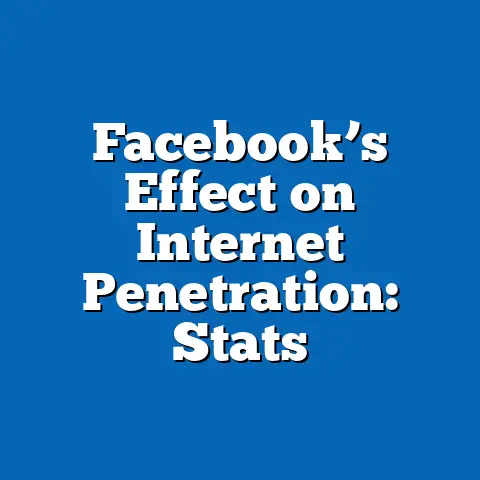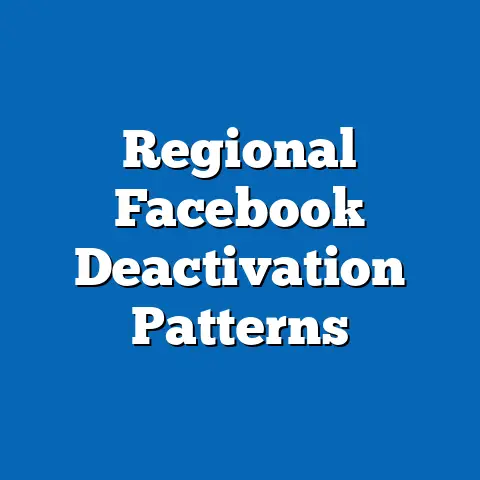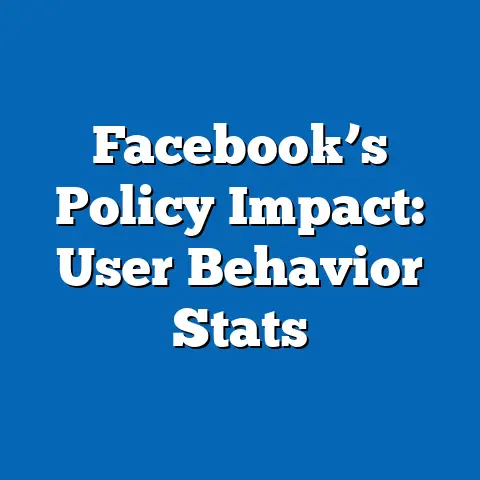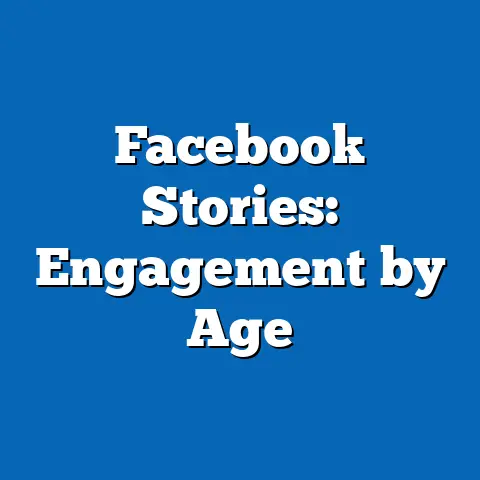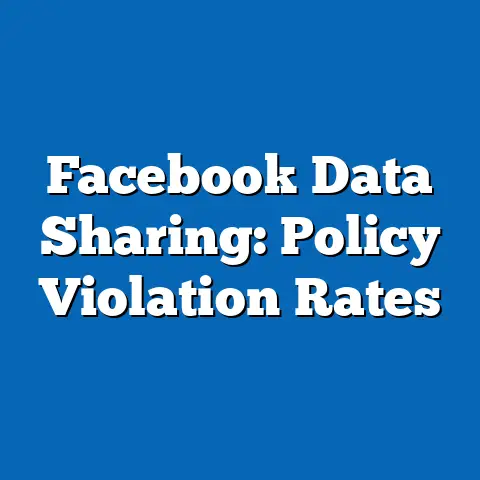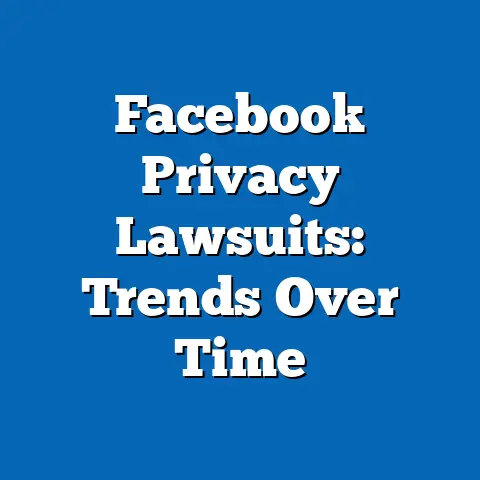Facebook Algorithm Effects on Content Visibility
In the digital age, social media platforms like Facebook have become integral to how individuals communicate, consume information, and shape their lifestyles. As of 2023, Facebook remains one of the most influential platforms globally, with over 2.9 billion monthly active users, according to Statista. This vast user base spans multiple generations, each with distinct needs, preferences, and historical contexts that influence their interaction with technology.
Understanding the effects of the Facebook algorithm on content visibility requires more than a technical analysis; it demands an exploration of how generational lifestyles and societal shifts intersect with digital tools. From Baby Boomers seeking community connections to Gen Z prioritizing authenticity and visual content, the algorithm’s impact varies across demographics. This article delves into these dynamics, examining how the algorithm shapes visibility while considering the broader implications for culture, communication, and societal cohesion.
Generational Lifestyles and Defining Characteristics: Setting the Context
Each generation approaches technology with unique expectations shaped by historical events, economic conditions, and cultural norms. These differences influence how they engage with platforms like Facebook and how the algorithm prioritizes content for them.
-
Baby Boomers (born 1946–1964): Raised during post-World War II prosperity, Baby Boomers value stability and community. Many adopted Facebook later in life to reconnect with family and friends, often prioritizing personal updates over trending content. Their limited tech savviness can make them more susceptible to algorithm-driven misinformation, as they may not critically evaluate shared content.
-
Generation X (born 1965–1980): Sandwiched between Boomers and Millennials, Gen X experienced the rise of personal computing and the early internet. They balance skepticism of authority with adaptability to technology, using Facebook for both professional networking and personal updates. Their engagement often focuses on niche groups, which the algorithm may deprioritize if not deemed widely engaging.
-
Millennials (born 1981–1996): As digital natives who came of age during the internet boom, Millennials use Facebook for social connection, career opportunities, and self-expression. They are more likely to engage with diverse content, from memes to political discourse, but growing concerns about privacy have led some to reduce usage. The algorithm often targets them with personalized ads based on their extensive digital footprints.
-
Generation Z (born 1997–2012): Growing up with smartphones, Gen Z prefers platforms like Instagram and TikTok but still uses Facebook for specific purposes like event planning or Marketplace. They value authenticity and are wary of curated content, often disengaging if the algorithm pushes irrelevant or overly commercial posts. Their short attention spans challenge the platform to deliver instant, impactful visibility.
These generational characteristics are not universal; diversity within cohorts—based on socioeconomic status, geography, and personal experiences—creates varied interactions with Facebook. However, understanding these broad trends provides a foundation for analyzing the algorithm’s differential impact.
Historical Context: The Evolution of Facebook and Its Algorithm
Facebook launched in 2004 as a college networking site, initially catering to Millennials in university settings. Its expansion to a global audience coincided with significant societal shifts, including the 2008 financial crisis, which heightened the need for online job networking, and the rise of smartphones, which made social media ubiquitous by the early 2010s. These events shaped how generations adopted the platform, with each wave of users bringing distinct expectations.
The introduction of the News Feed in 2006 marked a turning point, as it shifted content delivery from chronological to curated. By 2011, the algorithm began prioritizing “meaningful interactions” based on user behavior, a move intensified after the 2018 Cambridge Analytica scandal when public trust waned due to privacy concerns. Mark Zuckerberg announced a focus on fostering personal connections over public content, reshaping visibility for pages, businesses, and creators.
Historically, the algorithm’s evolution reflects broader societal tensions—between connectivity and privacy, community and commercialization. For Baby Boomers, the shift reduced visibility of local group content if not deemed “engaging” enough. For Gen Z, it often buries posts from smaller creators under a flood of viral content, aligning with their preference for instant gratification but frustrating niche communities.
The Mechanics of the Facebook Algorithm: How Content Visibility Works
At its core, the Facebook algorithm determines what content appears in a user’s News Feed based on a complex set of signals. According to Meta’s 2023 transparency reports, key factors include user engagement (likes, comments, shares), relevance (past interactions with similar content), and recency. The algorithm also considers “negative feedback,” such as hiding posts or reporting content, to refine visibility.
For businesses and creators, the algorithm’s bias toward paid content—boosted posts and ads—often overshadows organic reach. A 2022 study by Hootsuite found that organic reach for pages dropped to an average of 5.2% of followers, compared to over 20% a decade ago. This pay-to-play model disproportionately affects smaller entities unable to invest in advertising, a concern for Gen X entrepreneurs and Millennial influencers who rely on organic growth.
Generational usage patterns further complicate visibility. Baby Boomers, who engage more with shared articles, may inadvertently amplify misinformation if the algorithm prioritizes clickbait over verified sources. Conversely, Gen Z’s preference for quick, visual content means the algorithm often deprioritizes text-heavy posts, impacting visibility for advocacy groups or detailed journalism.
Societal Implications: Lifestyle Needs and Algorithmic Influence
The Facebook algorithm’s impact on content visibility extends beyond individual user experiences, influencing societal trends, communication norms, and even political landscapes. Below, we explore these implications through the lens of generational lifestyles and needs.
1. Information Access and Echo Chambers
The algorithm’s tendency to show users content aligned with their past behavior creates echo chambers, reinforcing existing beliefs while limiting exposure to diverse perspectives. For Baby Boomers, who often rely on Facebook as a primary news source, a 2021 Pew Research Center study found that 31% encountered misleading information weekly. This can exacerbate societal polarization, as algorithm-driven content deepens generational divides on issues like climate change or healthcare.
Millennials and Gen X, while more tech-savvy, are not immune. Their engagement with political or professional content can trap them in ideological bubbles, as the algorithm prioritizes posts from like-minded connections. Gen Z, though critical of curated feeds, often lacks the patience to seek out counter-narratives, further entrenching fragmented worldviews.
2. Mental Health and Social Comparison
Facebook’s focus on engagement metrics often amplifies content that evokes strong emotions, whether positive or negative. For Millennials and Gen Z, who prioritize self-expression, this can fuel social comparison and anxiety. A 2020 study published in the Journal of Social and Clinical Psychology linked frequent Facebook use to lower self-esteem among younger users, as curated posts of “perfect” lives dominate their feeds.
Baby Boomers, seeking connection, may feel isolated if the algorithm deprioritizes family updates in favor of viral content. Gen X, balancing work and personal life, often encounters stress-inducing ads or productivity-focused content, as the algorithm targets their demographic with career-oriented material. These dynamics highlight how visibility patterns clash with generational emotional needs.
3. Economic Disparities and Content Creation
The algorithm’s preference for paid content creates economic barriers, particularly for small businesses and independent creators. Gen X and Millennial entrepreneurs, who once relied on Facebook for cost-effective marketing, now struggle with low organic reach, as noted in a 2023 Social Media Examiner report. This shift favors larger corporations, widening economic disparities and reducing platform accessibility for diverse voices.
For Gen Z creators, the algorithm’s bias toward viral, short-form content—often requiring high production value—can discourage niche or experimental work. This commercial focus undermines the platform’s original promise of democratized communication, impacting societal diversity in digital spaces.
4. Cultural Shifts and Generational Disconnects
Culturally, the algorithm shapes how generations interact and perceive each other. Baby Boomers may miss younger relatives’ updates if Gen Z posts less on Facebook, opting for other platforms. Conversely, Gen Z’s exposure to Boomer-shared content—often memes or outdated articles—can reinforce stereotypes of older generations as out-of-touch.
Millennials, caught in the middle, often mediate these disconnects, but the algorithm’s prioritization of divisive or sensational content can hinder meaningful cross-generational dialogue. This fragmentation risks eroding shared cultural touchpoints, a concern for societal cohesion in an already polarized world.
Technological Factors: The Role of AI and Data in Shaping Visibility
The Facebook algorithm relies heavily on artificial intelligence (AI) to analyze user data and predict content preferences. Machine learning models process billions of data points daily, from click patterns to dwell time, to tailor feeds. While this personalization enhances user experience, it also raises ethical questions about surveillance and autonomy.
For Baby Boomers, limited digital literacy can make them unaware of how data drives visibility, leaving them vulnerable to targeted misinformation. Gen X and Millennials, more privacy-conscious, often adjust settings to limit tracking, though a 2022 Consumer Reports survey found that 62% of users still feel uneasy about data collection. Gen Z, while tech-native, grapples with the trade-off between personalized content and privacy erosion, often accepting the former despite concerns.
Technologically, the algorithm’s opacity—Meta discloses only broad principles—complicates accountability. Researchers like those at the Algorithmic Transparency Institute argue that without clear insight into ranking mechanisms, addressing biases in visibility remains challenging. This lack of transparency affects all generations, undermining trust in the platform as a neutral space.
Economic Impacts: Advertising and the Pay-to-Play Model
Economically, the algorithm’s shift toward paid content has transformed Facebook into a powerhouse for targeted advertising, generating $114.9 billion in ad revenue in 2022, per Meta’s financial reports. This model prioritizes content from advertisers over organic posts, impacting visibility for non-commercial users and small businesses.
For Gen X and Millennial professionals, the need to invest in ads strains budgets, especially for startups. Baby Boomers running small community pages often lack the resources or knowledge to boost posts, reducing their reach. Gen Z creators, reliant on visibility for brand partnerships, face pressure to conform to algorithm-friendly formats, stifling creativity.
This economic gatekeeping influences societal equity, as wealthier entities dominate digital spaces. The algorithm, designed to maximize revenue, inadvertently marginalizes voices that cannot pay for visibility, a trend with long-term implications for cultural and economic diversity online.
Social Dynamics: Community Building vs. Isolation
Socially, Facebook was founded on the promise of connection, yet the algorithm’s focus on engagement can isolate users from meaningful interactions. Baby Boomers, seeking community through local groups, often find their posts buried under viral content unless they generate high interaction. A 2021 study by the University of Michigan found that older adults on Facebook reported feeling lonelier when feeds prioritized distant connections over close ties.
Gen X and Millennials, using the platform for professional and social networking, face similar challenges if the algorithm deprioritizes niche content. Gen Z, valuing authenticity, disengages when feeds feel overly curated, as noted in a 2023 Pew survey where 48% of teens reported reducing Facebook usage due to irrelevant content. These trends suggest the algorithm can undermine the platform’s social purpose, impacting generational trust in digital spaces.
Comparative Analysis: Cross-Generational Algorithm Effects
Comparing generational experiences reveals both shared challenges and unique impacts. All cohorts face reduced organic reach and echo chamber risks, but the consequences vary. Baby Boomers’ susceptibility to misinformation contrasts with Gen Z’s frustration over inauthentic content, while Gen X and Millennials navigate economic barriers to visibility.
Historical context amplifies these differences. Boomers, shaped by traditional media, trust shared content more readily, aligning with the algorithm’s engagement bias. Gen Z, raised on influencer culture, demands transparency, clashing with opaque prioritization. Gen X and Millennials, bridging analog and digital eras, adapt to changes but resent the pay-to-play shift.
Diversity within generations further complicates patterns. Urban Boomers may engage more with tech than rural peers, while affluent Gen Z users can afford ad boosts unavailable to others. These nuances underscore the need for tailored solutions to address algorithm effects across demographics.
Forward-Looking Insights: The Future of Content Visibility on Facebook
As Facebook evolves, so will its algorithm, with implications for generational engagement and societal trends. Meta’s investment in AI suggests even more personalized feeds, potentially deepening echo chambers unless balanced by transparency initiatives. Efforts like the 2023 “Why Am I Seeing This?” feature aim to explain content prioritization, but their effectiveness remains unproven.
Generational shifts also loom large. As Gen Z and emerging Gen Alpha dominate user bases, demand for visual, authentic content may push the algorithm away from text-heavy posts, marginalizing older users. Conversely, aging populations may prompt features for accessibility, reshaping visibility for Boomers.
Economically, the pay-to-play model will likely persist, though public pressure for equitable access could spur regulatory changes. Socially, fostering cross-generational dialogue will be critical to counter polarization, requiring algorithm tweaks to prioritize diverse interactions over divisive content.
Uncertainties remain, including the impact of competing platforms and evolving privacy laws. A 2023 forecast by eMarketer predicts Facebook’s user growth may stagnate in Western markets as younger generations migrate elsewhere. How Meta adapts its algorithm to retain relevance across demographics will shape its societal role in the coming decade.
Conclusion: Balancing Technology and Human Needs
The Facebook algorithm’s effects on content visibility reflect a complex interplay of technology, generational lifestyles, and societal dynamics. While it enhances personalization, it also risks isolation, polarization, and economic inequity, with distinct impacts across Baby Boomers, Gen X, Millennials, and Gen Z. Historical context—from the platform’s inception to privacy scandals—underscores how external forces shape these outcomes.
Addressing these challenges requires a nuanced approach, blending transparency, user education, and regulatory oversight. As society navigates the digital landscape, understanding generational needs and advocating for equitable visibility will be crucial. The future of Facebook, and its algorithm, hinges on balancing commercial goals with the diverse, evolving demands of its global user base—a task fraught with uncertainty but essential for fostering a connected, inclusive online world.

